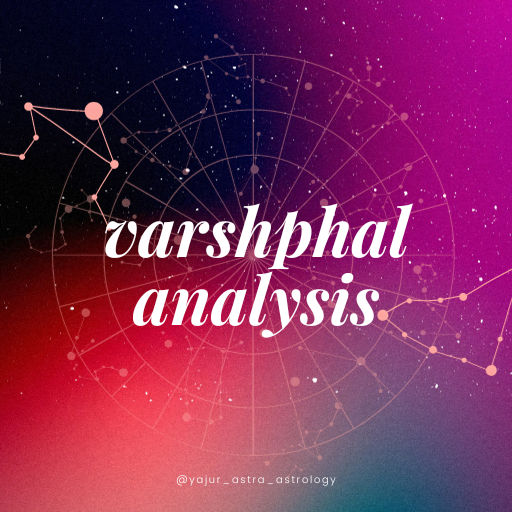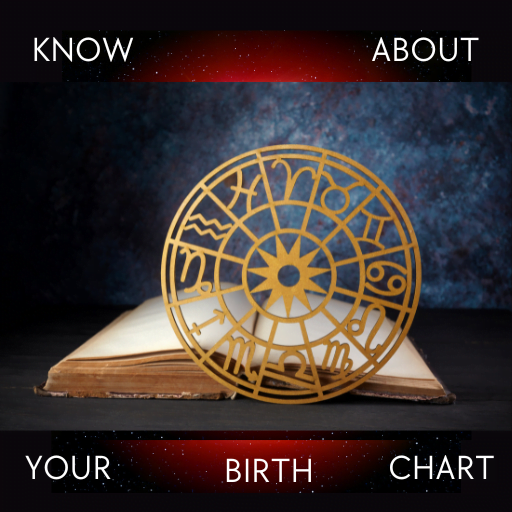Varshphal (The Annual Horoscope in Vedic Astrology)
Astrology is one of the most ancient sciences prevailing today, providing individuals with insights into their lives, personalities, destinies and guiding them as a roadmap for life. Varshphal, also known as Annual Horoscope, Solar Return, or Tithi Pravesh, is a unique tool for an in-depth analysis of an individual’s upcoming one-year period. In this blog, we’ll delve into the world of this powerful vedic technique, exploring its origins, fundamental principles, and how it can provide valuable guidance and help you plan your year ahead. The Origins of Vedic Varshphal: Varshphal finds its roots in Vedic astrology, also known as Jyotish, an ancient astrological system of cosmic knowledge that originated in India thousands of years ago. It is an amazingly accurate technique providing broad trends for the year. Tithi Pravesh was developed within this framework to provide a detailed analysis of a person’s life and the events they will go through in the upcoming year. The Concept of Varshphal Horoscope: At its core, the horoscope is constructed based on the positions of the Sun & Moon at the exact moment of an individual’s birth each year, which can offer valuable insights into the events and experiences that person is likely to encounter in the coming year. This relationship between the Sun and Moon is known as “Tithi” or the “Lunar Day.” We are born on the same tithi every year, which can differ from the solar day. This tithi provides accurate timelines for predicting events. For example, if an individual is born on 8th August 2002, on panchami tithi, or the 5th lunar day. Next year, it may not be necessary that panchami will fall again on 8th August; instead, the tithi may fall on 18th August 2003. Hence, every year, we may have a different date of birth, which needs to be calculated through Panchanga. This is also why we celebrate festivals on a different date each year. Key Principles : The Annual Tithi Pravesh Chart or the Annual Horoscope: There are two aspects to calculate the chart. The first element of analysis is the Solar Return when the Sun reaches the same zodiac sign occupied at the time of birth. The second component is the position of the Moon, which may be in a different sign than the birth horoscope. The critical aspect here is that the distance between the Sun and the Moon should be the same as at the time of the birth. When we have the same distance, we record all the planetary placements and create the horoscope. Planetary Influences: Like the birth horoscope, annual chart analysis also considers the positions and aspects of all the planets in the Tithi Pravesh. These positions are then interpreted to understand their potential impact on various aspects of the individual’s life, such as career, relationships, health, and finances in the upcoming year. For example, the placement of Venus in the tithi pravesh can provide insights into matters of love, relationships, and creativity, while Mars may signify action, drive, and conflict. The interactions (aspects) between these planets further refine the interpretation. House System: It uses the same twelve houses as traditional Vedic astrology, each governing specific areas of life. The planets placement in these houses provides insights into the corresponding areas of life that will be highlighted during the year. The twelve houses in the tithi pravesh correspond to specific areas of life, much like in natal astrology. Here’s a brief overview of the houses and their associations: First House (Ascendant): Self, identity, appearance. Second House: Finances, possessions, values. Third House: Communication, siblings, short trips. Fourth House: Home, family, roots. Fifth House: Creativity, romance, children. Sixth House: Health, work, daily routines. Seventh House: Partnerships, marriage, contracts. Eighth House: Transformation, shared resources, sexuality. Ninth House: Higher education, travel, spirituality. Tenth House (Midheaven): Career, public life, reputation. Eleventh House: Friendships, goals, social networks, income. Twelfth House: Isolation, spirituality, hidden matters. The planets positions in these houses provide clues about the areas of life most prominent during the year. Planetary Transits: Transits in relation to the natal kundli are also evaluated in the predictions. These can indicate periods of change, growth, challenges, or opportunities throughout the year. For example, if Jupiter travels through the second house of finances in the tithi pravesh, it may indicate a year of financial growth and abundance. Conversely, Saturn’s transit through the seventh house could signify challenges or transformations in one’s relationships. Yogas and Dashas: Astrology often involves using Yogas (combinations of planetary positions) and Dasha (planetary periods) in analysis. These factors can reveal important themes and timing within the year. For instance, a “Raj Yoga” may indicate a year of heightened status and success. At the same time, the Dasha of a malefic planet during a challenging yoga period might signify obstacles and delays. Benefits of Varshphal Analysis: Self-Reflection: The analysis encourages individuals to reflect on their past year and evaluate their aspirations for the year ahead. It can be a powerful way for self-awareness and personal growth. Strategic Planning: By understanding the potential challenges and opportunities in the coming year, individuals can make informed decisions and set goals accordingly for the upcoming year. It can be particularly valuable for health, career planning, relationship dynamics, financial stability, and other significant life aspects. Timing Events: It can provide insights into when specific events or changes will likely occur throughout the year. This can be beneficial for timing significant life decisions. Understanding Karma: The analysis can reveal recurring themes in an individual’s life. By examining multiple annual charts over several years, one can identify patterns an individual follows over the years, gaining a deeper understanding of their life journey. How to Interpret Annual horoscope: Interpreting the chart requires a deep understanding of astrology and a keen intuition. Astrologers consider the unique combination of planetary influences, house placements, and other vital aspects to offer insights into various aspects of an individual’s life. Here are some significant aspects that tithi pravesh analysis can address: Career and Finance: We can get significant guidance on career prospects, promotions, job changes, and financial stability for the year.. Relationships: It can shed light on romantic relationships, marriage, and
Varshphal (The Annual Horoscope in Vedic Astrology) Read More »




